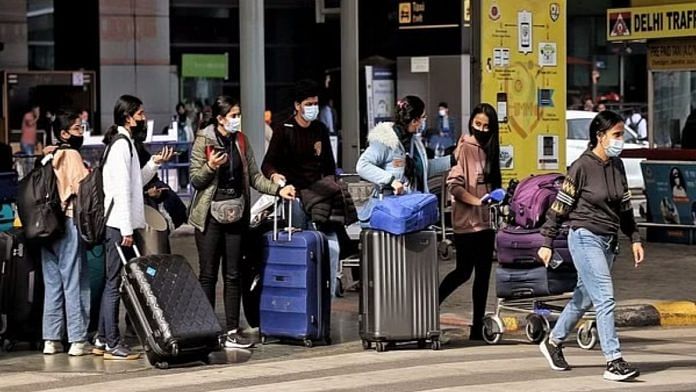For Indians studying in Canada, the ongoing diplomatic standoff between the two countries is just the latest chapter in a series of relentless challenges. Earlier this year, Canada reportedly threatened to deport around 700 Indian students, mostly from Punjab, over allegations that their admission letters were forged. Apart from being scapegoated for Canada’s housing crisis, Indian students have also been dealing with rising rental costs, homelessness, and reduced employment opportunities. As reports of extremism on Canadian soil mount, there are growing fears that tensions among international students and discrimination against Indian Canadians would also increase.
Many are asking if students will continue to migrate to Canada and whether the country would issue visas to Indian students. However, the vulnerabilities experienced by Indian students in Canada raise pertinent questions about India’s role in ensuring their safety and well-being. In the post-migration phase, students can use their position as crucial human resources in developed economies to demand better services and treatment. However, in the pre-migration phase, it is India’s responsibility to spread awareness among prospective international students and enable them to make informed immigration decisions.
Holes in the Canadian dream
In 2022, Canada received 807,750 international students, of which 40 per cent were from India. Indian students have gravitated toward Canada due to its immigrant-friendly policies and permanent residency options. Canada offers a two-step migration pathway, allowing graduate students to obtain post-graduate employment permits, accumulate necessary work experience, and apply for permanent residence. In many Indian communities, migration is a central aspiration around which various life plans are made. But has this narrative begun to falter in the face of rising challenges?
YouTube channels and documentaries featuring Indian international students are becoming increasingly popular. They point to the discrepancy between expectations and the reality of life in Canada and critique the country’s housing situation, healthcare system, employment opportunities, and educational infrastructure. They question whether the Canadian experience is still worth it. In June and September, international students took to the streets to protest the deportation of Indian students and the lack of affordable housing in Ontario, pointing to their increasing disenchantment with Canada.
The Canadian government, almost in anticipation of its declining popularity among students, released a report on 20 September, which outlined ways to enhance the country’s international student programme. It spoke about improving housing, regulating education agents, and permanent immigration pathways to ensure a smoother experience for foreign students. Colleges in Canada are also telling students to wait out the current instability and apply for the Fall 2024 semester.
The University of Toronto released a statement extending support to incoming and current Indian students. These measures suggest the continuing importance of international students for Canada’s economic and social development.
Migrant students must also take a cue from this posturing and recognise their crucial role in ensuring the continuity of developed economies. They must use this position to demand better services and treatment. Apart from deportation, student mobilisation must also target issues they face in daily life. Those planning to shift abroad must make informed decisions and vote with their feet, refusing to go to countries that do not advance their vision for economic and social inclusion.
Also read:
India’s responsibility
India, as the world’s most populous country with a significant youth demographic is exporting human resources to support the economies and societies of an ageing Western world. Thus, it often takes ex-post measures such as evacuating students from conflict situations and asking them to register with the Indian High Commission in their destination country. These ad-hoc measures, however, only ensure immediate safety and are unable to mitigate the everyday challenges faced by students.
India must be proactive and develop a policy to increase youth awareness in the pre-migration phase to facilitate more informed decision-making and preparedness to deal with post-migration challenges.
While distressed students often share their experiences through videos and social media posts, information flow is still largely limited and may not adequately inform those planning to move. Migration is a family-level decision that hinges on trust, and is typically made in consultation with one’s relatives and social network. Here, sending countries like India have an opportunity to establish themselves as trusted sources. They can use digital platforms and develop effective communication channels with prospective migrants to disseminate information not only about study programmes but also about post-migration life and its challenges. Further, these platforms can link prospective migrants with resources and certified education counsellors who can guide them in making an informed decision.
Such policy initiatives will showcase India’s commitment to the long-term development of migrant youth and enable it to hold destination countries accountable for the well-being and protection of Indian students.
Dr. Sugandha Nagpal is an Associate Professor of Sociology at O.P. Jindal Global University. She is a Canadian and an OCI who works on youth migration and gender mobility in India. She tweets @NagpalSugandha. Views are personal.
(Edited by Zoya Bhatti)



